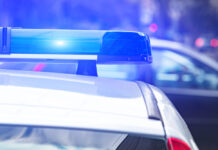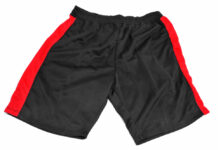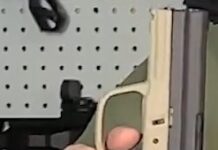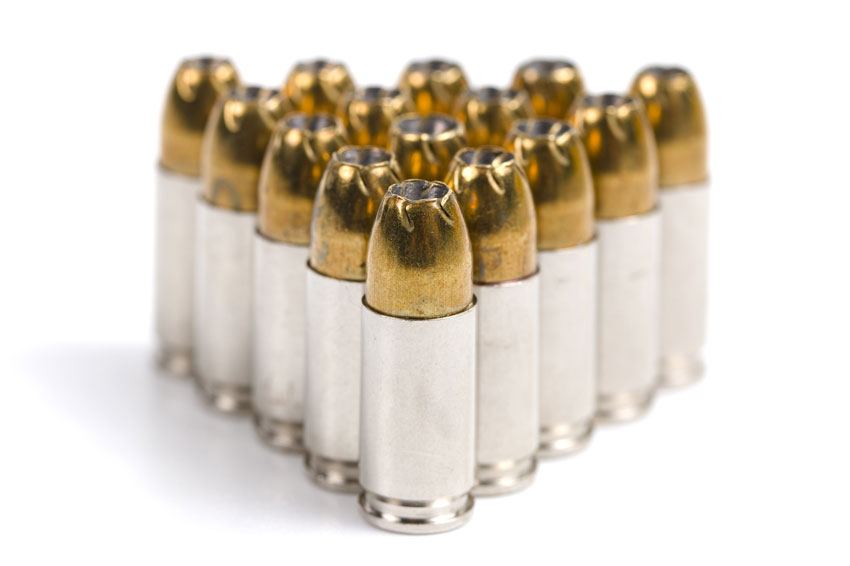One ![]() of the great headaches of my life is when someone decides to inform me how qualified they are to carry and use their personal protection handgun, because they took their state’s eight- or sixteen-hour licensing class, that covered the legal requirements to carry, and they actually had to shoot a qualification table at the end of the class. As a guy who has carried a weapon for all of his adult life, and used them in the anti-personnel role on multiple occasions, my experience has been that using a weapon requires several fundamental skills at a quantifiable standard, if you hope to survive, let alone “win” the fight.
of the great headaches of my life is when someone decides to inform me how qualified they are to carry and use their personal protection handgun, because they took their state’s eight- or sixteen-hour licensing class, that covered the legal requirements to carry, and they actually had to shoot a qualification table at the end of the class. As a guy who has carried a weapon for all of his adult life, and used them in the anti-personnel role on multiple occasions, my experience has been that using a weapon requires several fundamental skills at a quantifiable standard, if you hope to survive, let alone “win” the fight.
In the three-day Clandestine Carry Pistol course that I teach, we focus on three of these, that will be the focus of my first article series here on PreparedGunOwners. Those three are:
- Be Able to Hit What You NEED to Hit, As Many Times As Necessary.
- Be Capable of Getting the Gun Into the Fight, in Time to Be Useful.
- Make Appropriately Good Decisions, Under the Stress of a Life-or-Death Fight.
Be Able to Hit What You NEED to Hit, As Many Times As Necessary.
When I was a young private at Fort Benning, going through Infantry OSUT, we were taught that there were eight fundamentals of marksmanship. As my buddy, SFC Ash Hess, one of the lead authors of the newest edition of the US Army Rifle Marksmanship Field Manual has pointed out though, there are really only TWO fundamentals to hitting what you are trying to hit, when firing a gun: you need a valid sight picture (including sight alignment), and you need to be able to break the trigger, without disturbing that sight picture.
When we are discussing our personal protection handgun, there are a couple of things that facilitate not only achieving this, but achieving it for more than one shot in a row. Those are proper grip, sight alignment, sight picture, and trigger squeeze. Of these, in my experience, proper grip is the foundation that facilitates the second and third.
Grip on a pistol should be high, tight, and consuming. By this, we are referring to getting both hands as high on the frame, as close as possible to the bore axis of the gun. We are also referring to gripping the gun tightly, and “consuming” the gun’s frame with your hands; creating a maximal amount of contact between your hands and the gun. Together, these three grip traits provide a couple of important services.
First of all, a good, solid grip should create a repeatable presentation of the sights of the gun, allowing for a proper “equal height, equal light” sight picture. By this, we are referring to the alignment of the sights, superimposed over the desired aiming point on the bad guy’s body. The tops of the front and rear sights should appear to be of “equal height,” with “equal light” exposed on either side of the front sight, in the notch of the rear sight. If our grip is adequate, every time we punch the gun out, during our presentation, as the sights enter our field-of-vision, we should see this proper sight alignment, naturally.
Second, a good, solid grip allows us, not to “stop” the recoil cycle, but—more importantly—to recover the gun, at the end of the recoil cycle, to the EXACT SAME PLACE IT WAS WHEN THE SHOT BROKE. By doing so, obviously, if our sights were aligned, and on target, when we broke the shot, then at the end of the recoil cycle, the gun has returned to that spot…meaning? We can break the next shot as soon as the gun comes out of the recoil cycle, allowing us to run the gun—and get hits—as fast as mechanically possible, out of that gun.
Third, a good, solid grip allows us the greatest opportunity to move the trigger through the trigger stroke and break, without disrupting the sight picture very much. This is important. One of the old mantras of pistol shooting accurately has long been, “squeeze the trigger straight to the rear.” That is possible with something like a 1911. With many of the modern striker fired pistols however—especially the Glock—that is actually impossible. In the 1911, for example, the trigger moves straight to the rear; there’s no pivot, except in your trigger finger. In the Glock however, the trigger actually pivots inside the frame. Added to the natural pivot of the joints of your trigger finger, this means you have to overcome TWO fulcrums in order to “squeeze the trigger straight to the rear.” Good luck with that…
Instead, the effective way to run the gun—including a 1911, for that matter—is to WATCH YOUR SIGHTS, and adjust your trigger squeeze as you fire, if your sights start to move. This is nowhere near as impossible as it sounds. The human eye can see the equivalent of somewhere around 1000 images a second, and your brain can certainly process at that speed. That is far—FAR–faster than your finger can move that trigger. As you’re squeezing the trigger, if the “equal height, equal light” wavers, you “simply” adjust your trigger squeeze to overcome that discrepancy.
If you develop the ability to work the trigger, while allowing your brain to process what your eyes are seeing, you will have the ability to hit what you NEED to be able to hit. By gripping the gun in a good, solid grip, allowing the gun to move back to its starting point at the end of the recoil cycle, you have the ability to follow your initial shot up with multiple follow-on shots, as necessary.
You Are Accountable
The truism is that “you are accountable for every round that leaves your muzzle.” Truer words were never spoken. We’re not at Belleau Wood, spraying rounds at the Krauts. We’re not at Bastogne, encircled by Nazis. We’re not in the Vietnamese jungle, blowing through a “Mad Minute.” EVERY. SINGLE. ROUND that leaves your muzzle needs to be a conscious, rational decision. You can only shoot your next shot when you make the decision that it is necessary to do so. Fortunately, you can process the available data and make a decision based on that data a whole lot faster than you probably realize…despite the naysaying of some academics in the training industry.
There are two aspects to being able to make rapid, well-informed, precise, follow-on shots. The first, which we will cover in a follow-on installment of this article series, is speeding up the data analysis/decision-making processes. The second is the mechanical, and involves learning to take advantage of the brain’s natural attraction to patterns and rhythms. Instead of blowing out of the gate, trying to blast as many rounds downrange as possible, as fast as you can yank the trigger, we slow down and find a rhythm. Then, we gradually increase the speed of the rhythm.
In classes, I have had students who’ve never fired more than staccato double-taps, build to firing a five-round string, to a 3×5 index card, at 30 feet (10 meters), in less than one second. That’s a 0.2 split-time between shots (which, again, we will go into more detail in the later installments), to a 3×5 target zone, at 10 yards, which is respectable by anyone’s standards. For a relatively novice shooter to achieve it, within a couple hours of instruction and practice, says a lot about the methodology’s value.
In classes, we start with me clapping and counting a rhythm, as students “dry-fire” a string, taking their time between “shots” to reacquire an “equal height, equal light” sight picture. The rhythm starts out deliberate: “One Thousand and ONE, One Thousand and TWO, One Thousand and THREE, One Thousand and FOUR, One Thousand and FIVE,” with the “shot” coming on the accented number count. Once students are comfortable with that speed, we do the same rhythm live-fire.
Then, we repeat the process, using a slightly faster rhythm: “One Thousand ONE, One Thousand TWO, One Thousand THREE, etc.” Then, we move on to, “And ONE, and TWO, and THREE, and FOUR, and FIVE,” before finally moving on to, “ONE, TWO, THREE, FOUR, FIVE,” gradually increasing the speed of the final count call, to each shooter’s breaking point.
The goal of this exercise is two-fold. First, it conditions us to reacquire the sight picture, and prep for the follow-on shot, faster, so we can break the next shot sooner. Second, it begins teaching the student how much time there actually is during the recoil cycle, where they can be assessing the battle space, through their sights, and make rapid decisions in that time span.
By recognizing that time span that is available to us, we develop the ability to not only continue shooting the bad guy as many times as necessary, but also to see what we need to see, in order to make sound decisions in split-seconds, to avoid shooting anyone or anything we shouldn’t be shooting. Additionally, taking advantage of this allows us, when we DO screw up, to recognize it in time to avoid continuing to screw up. One thing I tell students in classes, that I can assure you: if you screw up and smoke a round into a six-year old, you CANNOT make the situation better by continuing to shoot the rest of his playmates.
What Do You Need to Hit?
—TRIGGER WARNING!!!! The next section contains opinions, based on personal experiences, that are widely considered heretical in the shooting industry. TRIGGER WARNING!!!—
What an “acceptable” target zone is defined as varies, even among “personal defense” shooting instructors. Some will tell you, a hit anywhere on the bad guy is okay, because it will slow him down, and may make him stop. Others will tell you, anywhere on the torso. Some advocate more precision, insisting on hitting the upper thoracic cavity, where the heart and lungs are housed.
I tend to be a bit contrarian, and more than a little elitist. I want students of the gun to be able to hit the bad guy wherever they feel, in the moment, is going to be effective. For this reason, I don’t focus my courses on hitting a specific part of a photo-realistic target or a silhouette. Instead, we shoot 3×5 index cards, at ranges out to 15 meters (45 feet) depending on the class and students’ abilities. If you can smoke multiple rounds into a 3×5 box—consistently—in an quantifiable time limit, you are going to be able to smoke rounds into the bad guy’s bread box, as needed.
I teach target matrix decision-making predicated on “what is likely?” and “what is possible?” For me, it is “likely” that—in the event you do need to shoot a bad guy in the personal protection context, they will be some scumbag breaking into your house, carjacking you, or holding you up, with the remote possibility that you might need to engage some dude holding someone else at gun point (more on THAT one in part three). What is “possible,” is—I believe—becoming more “likely” every day. That is, an active shooter scenario, with the shooter wearing an explosive vest, as we saw earlier in the year, in Brussels, Belgium, during the airport attack in that city.
While many people—especially in the gun/tactical community—have seen the security camera footage of the Belgian cop shooting one of the bad guys, then running away, moments before the wounded shooter blew his vest, what a lot didn’t hear is, apparently, the cop didn’t run fast enough, since he was killed in the blast. There was a possible solution to that, when the officer approached, and saw that the shooter had a vest one, he could’ve smoked him in the grape, but we—I—don’t know if there was some sort of “dead man” switch on the device that the officer saw. I find it unlikely though. It’s awful hard to run a gun with any degree of effectiveness while holding on to a dead man switch. More likely, to my mind, is that when the officer ran up, he saw the bad guy fumbling with the trigger, and ran off before it could be blown.
There’s an easier solution to that though, which also deals with bad guys wearing body armor, and that is, make the head shot your default. That doesn’t mean you can’t process the available data, as you’re drawing the gun, or before your draw the gun, and decide that you can settle for a lesser target, but if you are conditioning yourself to focus on the headshot, then it will not be as intimidating when you realize that is the only option (in the interest of intellectual integrity, I have never had to shoot a bad guy in the head with a pistol. I’ve done it a couple times with a carbine, for real, and I’ve done it a LOT in sims gun training scenarios with a pistol.) It’s not impossible, by a long shot, and it’s not even particularly hard, given the training to be able to process the data in the battle space more rapidly. The head shot is a solid default target zone—especially at common defensive pistol distances—and should not be dismissed instantly because “it’s too hard to hit, because it’s moving.” I will spend more time discussing the advantages of the head shot, as the “CPU Shutdown” method of stopping bad people from doing bad things, in a future article.
Conclusion
In part one of this series, we’ve discussed some of the basic foundational elements to the most fundamental skill in practical, personal protection shooting. It is not THE most important—that would be good decision-making—but it is one of the foundations that allows us to use the gun effectively.
If you cannot hit what you need to hit, as many times as necessary, there’s little point in carrying your gun. It’s not some sort of magical talisman that wards off evil-doers by its mere presence. It is only through the skilled application of the weapon that it becomes effective. That requires training, but more importantly, it requires continuing practice of the skills learned in training.

![Case Study: Defensive Gun Use [Video] NSFW](/wp-content/uploads/2025/07/Depositphotos_282075792_S-218x150.jpg)








![What Level Holster Should You Be Using? [Video]](/wp-content/uploads/2024/04/Depositphotos_44548439_S-218x150.jpg)


![How Many Shots Will It Take? [Video]](/wp-content/uploads/2025/06/Depositphotos_2724272_S-218x150.jpg)



















![Optic Ready vs Milled slides? [Video]](/wp-content/uploads/2024/02/image-3-100x70.png)
![[Checklist] What Gear You Need To Take Pistol, Rifle & Shotgun Training Courses [Video]](/wp-content/uploads/2023/07/Depositphotos_275087632_L-100x70.jpg)
![What is in Carter’s 2023 EDC? [Video]](/wp-content/uploads/2023/07/Depositphotos_146856137_L-100x70.jpg)



Excellent and astute..
Excellent advice.
Good, sound advice. But there is one thing that puzzles me. I have a training video that describes pretty much the same methods. It, too, trains you to consistently speed up the firing sequence. I see the sense in this, but what puzzles me is the fact that using a dry fire technique as described, you do not have the advantage of the pistol (semi-automatic) racking the weapon after each pull of the trigger. Not having the slide racked on each drill means you are not getting the feel of the trigger pull or the advantage of “pulling the trigger straight back.” How is this accomplished? Am I missing something here?
Alden, that would be the ‘downside’ if you will, of “dry fire” practice. With EACH pull of the trigger, you’ll need to rack the slide…allowing the trigger to reset. You’ll find, depending on the model, it doesn’t take much to be reset with most (nothing like a FULL-pull of the slide). You HAVE to FEEL the trigger..that’s mandatory for the exercise.
A 2-day or a 4-day defensive course at any firearms training institute, will make you MORE than qualified to concealed cary …
[…] Skin That Smoke Wagon! Fundamentals of Clandestine Carry Pistol […]
Great having you on board here John. Looking forward to your input on this thread..
Good, useable knowledge presented in a easy-to-use way. The concept of ‘dry-firing’ the weapon to accustom yourself to your particular weapons inherent ‘trigger-pull’… Which, during Any real-life situation, is Vital.
Great article, well-written and easy explanations even a novice will get.
Thank you!
Well thought out and well expressed. Kudos.
How do you dry fire and rack the slide at an increased tempo?
Good and sound basic information. I’m looking forward to reading more in the near future.
Comments are closed.